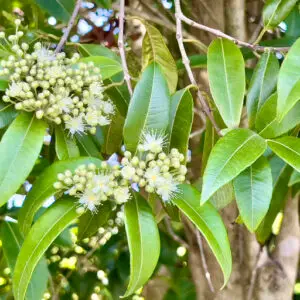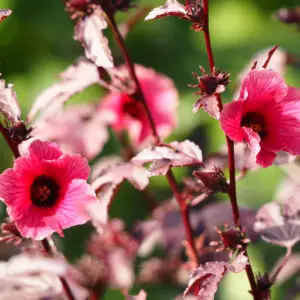Cranberry Hibiscus (Hibiscus acetosella) is a short-lived shrub about 2 meters high. It likes full-sun to part shade. Tip-prune to maintain vigour. It likes moisture, rich and well-drained soil and mulch. Cranberry hibiscus is not very frost-hardy.
Other names: African rosemallow, false roselle, maroon mallow, Florida cranberry
Plant 60cm apart, the plant grows rapidly to 1.7m high, leaves look similar to a Japanese maple. Prefers full sun but will grow in part shade. Ample watering, rich, well-drained fertile soil that is kept mulched. Responds well to pruning, becomes a bushy shrub.
Pot Sizes: Small – 4 x Tubes 40-80mm wide, Medium – 1 x 80-120mm pot, Large – 1 x 125-300mm pot
Plant Size: Mature stock with well developed roots according to pot size
Delivery: Plants are carefully packaged to ensure safe transport with fast, delivery to your door. Plants can be planted directly in the ground. Water immediately on planting to reduce transplant shock. Delivery is flat rate on all orders up to 5kg Australia wide.
Cranberry Hibiscus is a short-lived perennial shrub that thrives in the South East Queensland climate due to it preferring a warm and wet environment. The leaf colour is a deep cranberry red and looks wonderful as an ornamental in the garden. Cranberry hibiscus tends to flower late in season when days are shorter. Flowers open for a few hours during the late fall to early winter at midday. Cranberry hibiscus is often grown after tomatoes and potatoes and related species of which are not resistant to nematodes.
Cranberry hibiscus is mostly known for its slightly sour to pleasantly tart-tasting young leaves, which are commonly used as a vegetable, either raw or cooked. In South America, the leaves are used, sparingly, in salads and stir-fries. Leaves are eaten in small quantities, however, due to acid content and because they are mucilaginous. Cranberry hibiscus leaves also contribute to the décor of various dishes as they retain their color after being cooked.
The flowers are used to make teas or other drinks, in which they contribute a deep color, and possible mild medicinal benefits, rather than taste. In Central America, the flowers are combined with ice, sugar, lemon or lime juice, and water to make a purple lemonade.











